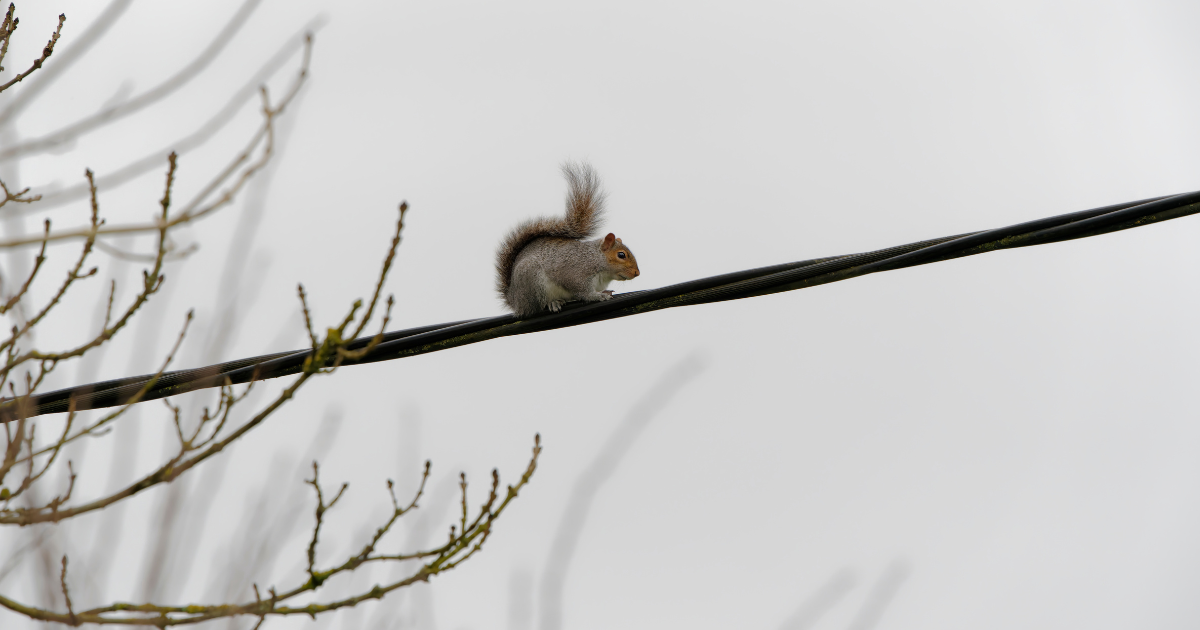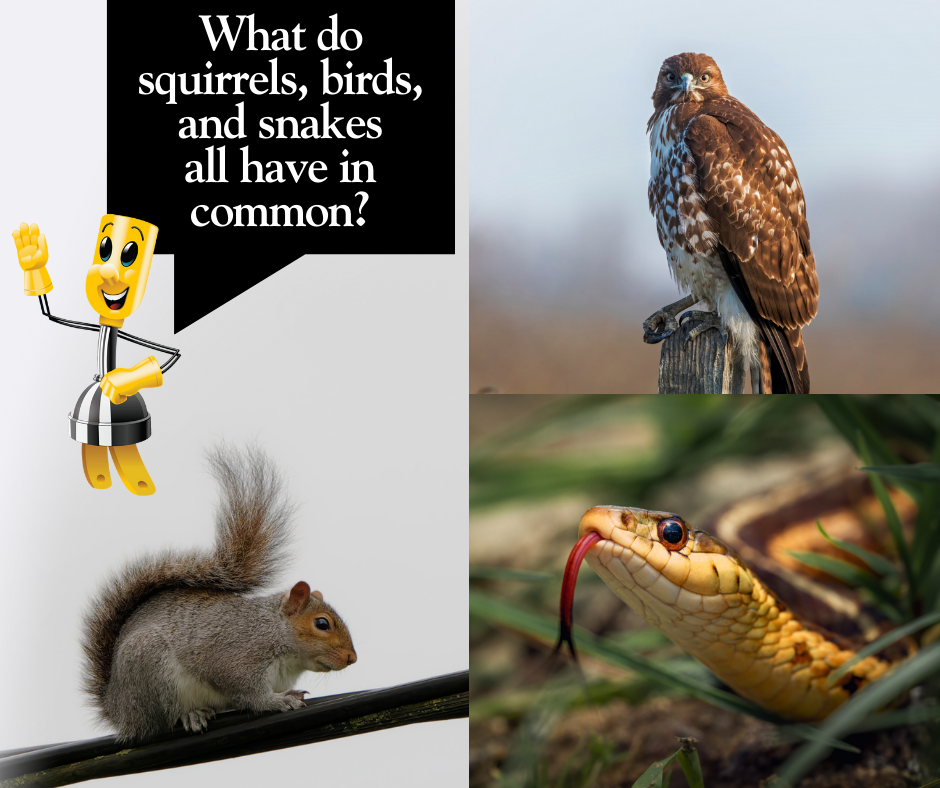What do squirrels, birds, and snakes all have in common?

 Besides being cute, fun to watch, or just plain slithery, animals can disrupt power. Although we do all we can to prevent animal interference by using equipment guards, anti-roosting devices, or other animal-friendly deterrents, sometimes our efforts are no match for persistent and curious critters who use overhead power lines as a superhighway or substations as nesting ground.
Besides being cute, fun to watch, or just plain slithery, animals can disrupt power. Although we do all we can to prevent animal interference by using equipment guards, anti-roosting devices, or other animal-friendly deterrents, sometimes our efforts are no match for persistent and curious critters who use overhead power lines as a superhighway or substations as nesting ground.
According to the Electrical Engineering Portal (EEP), the following classes of animals have caused shorts and subsequent power outages or service disruptions:
- Squirrels love to use power lines as their overhead highway. They are agile and crafty – oftentimes equipment guards and other deterrents cannot keep them away, much like a squirrel outsmarting a bird feeder. If they touch the power line and pole (or other equipment) simultaneously, the electric current travels through them and their demise can cause problems with power transmission.
- Mice, rats, and gophers (oh my!) sometimes cause interruptions in service by gnawing through underground cables. These offenders (and others) can also try to make a home in a substation, which often does not turn out well for them and can cause a hiccup in power distribution for us.
- Birds: different species can cause different types of problems. Although small birds can sit on a wire without a problem, some larger varieties like to build nests at the tops of poles, on transmission towers, and in substations. Nesting material can cause faults (abnormal electric currents), and bird droppings can contaminate insulators, according to EEP. Other times, large birds with long wing spans can touch a live power line with one wing tip and something else with the other and become a conductor for the voltage to pass through them. This is called “bridging.”
- Snakes – these slithering reptiles can disrupt service in both substations and underground service. They can squeeze through small spaces, travel upward, and have enough length to bridge from one current to another, causing a problem.
- Fire ants – these are often classified as animals (who knew?), and they are originally from South America. They have migrated to the southern United States and they like to build nests in pad-mounted transformer cabinets. Their presence can cause short circuits and they can eat conductor insulation. Needless to say, they can also make it a challenge to maintain equipment.
- Large animals like cattle, horses, bison, and bears can cause damage to guy wires and poles. They can cause physical damage and cause an outage or make the system more prone to outages in the future. Feisty bears can climb wooden utility poles and make contact with live conductors.
For more information about electrical safety, visit SafeElectricity.org.